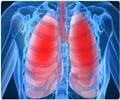Health care workers who are regularly exposed to detergents used to clean equipment and surfaces are at risk of lung diseases.
Highlights
- The risk of developing chronic obstructive pulmonary disease (COPD) is higher in those exposed to disinfectants.
- Glutaraldehyde (a strong disinfectant used for medical instruments), bleach, hydrogen peroxide, alcohol and quaternary ammonium compounds (known as "quats", mainly used for low-level disinfection of surfaces such as floors and furniture) were associated with COPD risk.
- Nurses who use disinfectants to clean surfaces on a regular basis - at least once a week - had a 22% increased risk of developing COPD.
Dr Orianne Dumas (PhD) from INSERM, Villejuif, France and her colleagues analysed data from 55,185 female registered nurses enrolled in the US Nurses’ Health Study II, which started in 1989. The nurses had no history of COPD in 2009 and they were followed for 8 years till 2017.During that time 663 nurses were diagnosed with COPD.
The exposure to disinfectants was evaluated via a questionnaire and a matrix that assigns exposure to disinfectants by job or task. The results were adjusted for factors that might affect the outcome, such as smoking, age, body mass index and ethnicity.
"We found that nurses who use disinfectants to clean surfaces on a regular basis - at least once a week - had a 22% increased risk of developing COPD," says Dr Dumas. "There was a suggestion of a link with the weekly use of disinfectants to clean instruments but this was not statistically significant."
Healthcare Workers At Highest Risk
"In our study population, 37% of nurses used disinfectants to clean surfaces on a weekly basis and 19% used disinfectants to clean medical instruments on a weekly basis," Dr Dumas will tell the congress.
The findings provide further evidence of the effects of exposure to disinfectants on respiratory problems, and highlight the urgency of integrating occupational health considerations into guidelines for cleaning and disinfection in healthcare settings such as hospitals.
More research needs to be carried out to investigate the impact on COPD of lifetime occupational exposure to chemicals and clarify the role of each specific disinfectant.
Dr. Dumas said, "Some of these disinfectants, such as bleach and quats, are frequently used in ordinary households, and the potential impact of domestic use of disinfectants on COPD development is unknown. Earlier studies have found a link between asthma and exposure to cleaning products and disinfectants at home, such as bleach and sprays, so it is important to investigate this further."
Reference
- Orianne Dumas et al., Nurses’ regular use of disinfectants is associated with developing COPD, , European Respiratory Society International Congress 2017.
Source-Medindia











